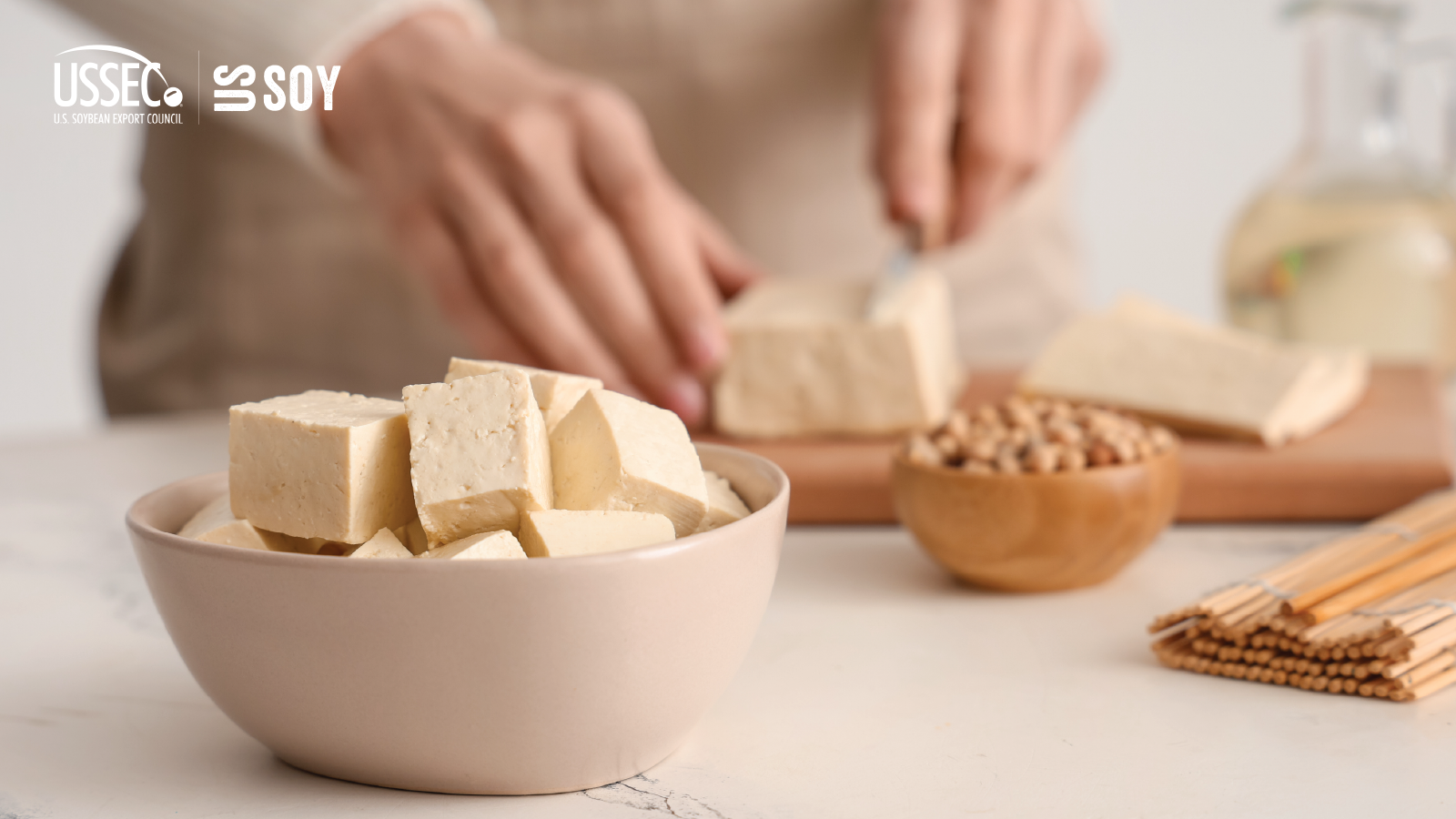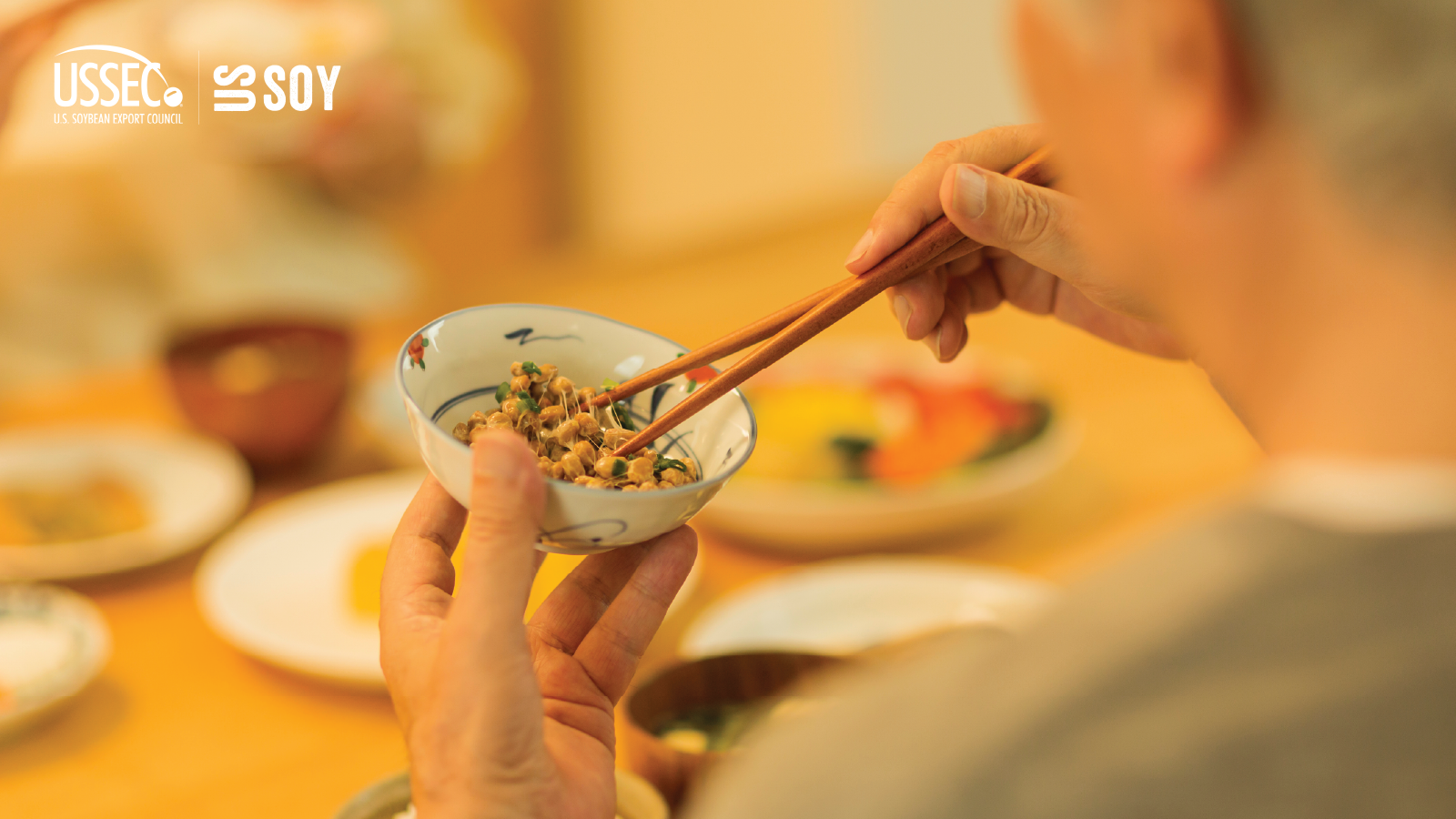Updated 2025 Asia Soy Food Report Analyzes Market Potential
- Category:
- Soy Foods
- Sustainability

Across bustling street markets, family kitchens, and cutting-edge food labs, soy is center stage in Asia’s evolving food landscape. The humble soybean has deep culinary roots in the region and continues to fuel a regional shift toward healthier, more sustainable eating.
USSEC’s 2025 Asia Soy Food Report, funded in part by the soy checkoff, offers a unique perspective on the soy food market in cultures where soy is considered a staple.
“This report dives into the latest soy consumption trends in ten key Asian countries—revealing who’s drinking the most soymilk, which markets favor tofu over tempe, and how U.S.-grown soy is meeting the demand for both tradition and innovation,” says Will McNair, Director, Soy foods, Oil and Global Team Development, USSEC. “Soybeans grown in the United States are shipped worldwide, helping the global population meet their protein needs in a sustainable way.”
The report details consumption trends of traditional soy products like tofu, natto, and soy drinks. It also delves into new trends focused on plant-based meat and other protein products, consumer interest in sustainability, and country-specific regulations. Here are a few highlights from each country:
China
China is not only the birthplace of tofu but also continues to be the largest consumer of tofu and tofu products. China’s soy food consumption is estimated to be approximately 11.8MMT, primarily sourced from domestic production. Over the last two decades, China has formed a robust soy protein industry, with a theoretical processing capacity of 3 million MT of soybeans annually which would equate to producing about 1 million MT of soy protein isolate, soy protein concentrate, and textured soy protein. About half of these finished products are exported to western countries and Southeast Asia.
Soybeans play an important role in Chinese diets and culture, with non-fermented and fermented products having graced tables for centuries. New soy products, like soy-based meat alternatives, are also gaining popularity. In the last five years soybean consumption in the country has trended upwards.

Indonesia:
Soy foods are significant to Indonesia's diets and culinary heritage—in fact, it’s where tempe was first created. The country’s soy consumption is growing. In 2023, the country consumed 1.8 million MT of tofu and tempe, and demand for soy drinks is on the rise. Because of its long history of consuming traditional soy foods, Indonesians often reach for tofu or tempe over new versions of plant-based meats.
Japan:
Soybeans are an essential ingredient in traditional Japanese products including soy sauce, miso, and natto, and these fermented soy foods and condiments are gaining popularity in Western diets. Japan imports 94% of its soybeans, with U.S.-grown soybeans accounting for 70%. Much of the soybean meal that Japan imports is non-GMO, and the majority is used for soy sauce production (7:3 ratio for soy sauce versus other soy protein meal-based products).
About half of the soy food consumed in the country is used for tofu and fried tofu, followed by natto, miso, and soy milk. Trending and emerging soy foods include soy protein supplements, soy-based meat alternatives, and even soy-based beer.

Korea:
The majority of Korea’s soybean imports are for crushing, with soy food beans making up 22% of soy imports over the past decade. The bulk of imported soy food beans (55%) are used to make tofu, while the remaining beans go toward soy sauce and paste, soy milk, and bean sprouts. Demand for tofu, soy milk, soy sauce and paste have increased, and the country’s consumers are sustainability-conscious demonstrate a preference for a plant-based diet is on the rise in fact, the soy food market grew from 814,000 MT in 2018 to 1,213,000 MT in 2022.
Malaysia:
Malaysia was first introduced to soy products in the 1600s and is dependent on imports for its soy foods. Soy milk became one of the country’s most popular drinks in the mid-1900s and continues to be a staple today. Of the 231,000 MT of tofu and soy milk the country consumed in 2023, nearly 60% were soy beverages. Though soy consumption dipped from 2020-2023, consumption is expected to increase, with tofu and soy beverage demand forecasted to reach 235,000 MT in 2026. The forecasted demand in Malaysia is driven by factors such as the growing middle class, health-conscious consumers, and an increasing awareness of climate change and sustainability issues.
Philippines:
Soy is an important food in Filipino culture, and the Philippines relies on imports for its soybeans. In 2023, 84% of its soybeans came from the United States. Tofu is a staple protein in Filipino households and is used to make traditional dishes, including tokwa’t baboy (tofu and pork). In 2023, the Philippines consumed 62,000 MT of tofu-related foods, and 26,000 MT of soy beverages. An upward trend is anticipated in the future.
Singapore:
On average, Singaporeans consume 14.3 pounds of soy foods and beverages annually. That figure is projected to grow as Singapore experiences a surge in plant-based consumption driven by more consumers in the country focusing on the sustainability of their food. Because of the country’s small size and limited agricultural land, most soybeans and finished foods are imported. In 2023, 22,000 MT of soybeans were imported (70.7% from the United States).
Taiwan:
More than 12% (3 million) of people in Taiwan are vegetarian—one of the most concentrated populations in the world—and its industries reflect that interest. There are more than 200 soy foods manufacturers in the country. In the last six years, Taiwan has imported 2.6 million MT of soybeans each year, primarily from the United States and Brazil. More than 90% of those soybeans are crushed with the remainder being used for soy foods production

Thailand:
Soy foods are widely available in Thailand, where vegetarianism is a common dietary choice. Its soy drink consumption is the highest in Southeast Asia (428,000 MT in 2023) and is expected to reach 13.9 pounds per person annually by 2026. Soy milk consumption outpaces tofu consumption in this country. Retail market shares between soy beverages and tofu are 97.7% and 2.3%, respectively. The country imports far more soybeans than they produce domestically, with most coming from Brazil and the United States.
Vietnam:
In 2023, 286,000 MT of soy beverage/milk (89%) and tofu (11%) were consumed. Though growth is slow, consumption is expected to reach 299,000 MT by 2026. Plant-based proteins are not new, as the large Buddhist population has incorporated soy foods into their diets for a long time. The market for plant-based meat alternatives is expected to double this year and reach $500 million. Though Vietnam is an agricultural country, they import 93% of their soybeans, 32.5% of which came from the United States in 2023.
Read the full report: https://share.hsforms.com/2mDwGrkNwTjKcuHQELHVCuQ17img
###
This article is funded in part by the soy checkoff.